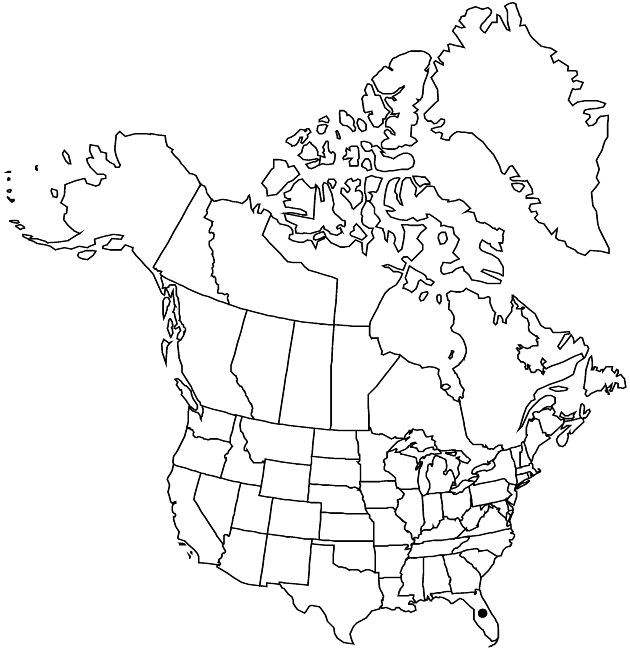Chrysopsis highlandsensis
Bot. Explor. 2: 2, figs. 1–3, 5, 7, 9, 11. 2002.
Perennials (weak or monocarpic), (30–) 60–110 cm; taprooted (new rosettes from bases of previous season’s stems or as side branches of primary unbolted rosettes). Stems 1–8 (–20), usually ascending to erect, moderately spreading near base, rarely decumbent, frequently branched (densely leafy), sparsely lanate, stipitate-glandular distally. Leaves: basal blades usually spatulate to oblanceolate, rarely obovate, (35–) 55–120 (–150) × 15–20 (–30) mm, bases narrowly attenuate-cuneate, margins entire or apically serrate-denticulate, faces loosely long-lanate, obscurely stipitate-glandular, viscid; cauline sessile, blades usually oblong to oblongelliptic, sometimes ovate to lanceolate, bases usually slightly auriculate-clasping, truncate to rounded, margins undulate, some cilia 2–3 mm, faces moderately woolly-lanulate, stipitate-glandular; mid to distal leaves ascending, often appressed, apices usually obtuse, sometimes subacute, mucronate or mucronulate, faces stipitate-glandular, distalmost glabrate to sparsely woolly-pilose, densely stipitae-glandular. Heads 10–50, in compact corymbiform to paniculiform arrays (height usually less than 1/5 plants, branches slender, ascending, stipitate-glandular, sweet camphor smelling). Involucres (yellow-green in bud) cylindro-campanulate, 6–8.5 mm. Phyllaries in 5–6 series, erect, linear-lanceolate, unequal, 0.7–1.1 mm wide, apices usually acute-acuminate, sometimes acute-aristate, sometimes inner obtuse to rounded, densely stipitate-glandular, viscid. Ray-florets 16–22; laminae 8–9.5 × 1–2 mm. Disc-florets 20–40; corollas 4.5–5.5 mm, lobes 0.6–1 mm. Cypselae 2–2.7 mm, without ridges, shallowly ribbed or smooth, moderately long-strigose; pappi in 3–4 series, outer of linear scales 0.5–1.5 mm, inner of 30–35 bristles 5–6 mm, inner moderately clavate. 2n = 10.
Phenology: Flowering late Oct–mid Dec.
Habitat: Sand pine scrub, scrubby flatwoods
Elevation: 20–50 m
Discussion
Of conservation concern.
Chrysopsis highlandsensis is known from Highlands, southern Polk, and northern Glades counties.
Selected References
None.
Lower Taxa
"thin" is not a number."[" is not declared as a valid unit of measurement for this property."]" is not declared as a valid unit of measurement for this property.
